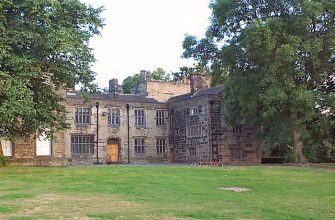Cambridge University Botanic Garden, located in the heart of Cambridge, England, is a horticultural haven and a significant educational institution. This botanical garden is a treasure trove of plant collections, showcasing a diverse range of flora from around the world. It is a hub of plant science research and a popular tourist attraction, offering visitors a unique blend of garden history, natural beauty, and scientific discovery.
History of Cambridge University Botanic Garden
The history of the Cambridge University Botanic Garden dates back to 1762 when it was first established as a small physic garden. However, the garden as we know it today was developed in 1846 under the stewardship of Professor John Stevens Henslow, mentor to Charles Darwin. The garden was designed to support the University’s research in plant science and has since grown into a world-renowned centre for horticultural research and education.
Attractions and What to Expect
The Cambridge University Botanic Garden is home to over 8,000 plant species from all over the world, spread across 40 acres of beautiful landscapes. Here are some of the key attractions:
- The Glasshouse Range: This is a series of large glasshouses showcasing plants from different climatic zones, including tropical rainforests, arid deserts, and alpine mountains.
- The Systematic Beds: These are designed to demonstrate the evolutionary relationships between different plant families.
- The Winter Garden: A specially designed area that provides colour and interest even in the coldest months.
- The Scented Garden: A sensory delight filled with plants chosen for their fragrance.
Visitors can expect a peaceful and educational experience, with plenty of opportunities to learn about plant science, horticulture, and garden history.
Tours and Admission
The Cambridge University Botanic Garden offers guided tours, which are an excellent way to learn more about the garden’s history, its plant collections, and ongoing research. The tours are led by knowledgeable guides and are included in the admission price. Tickets can be purchased online or at the garden’s ticket office. There are also special rates for students, seniors, and families.
Tips for Tourists and Practical Information
Here are some practical tips for tourists planning to visit the Cambridge University Botanic Garden:
- Wear comfortable shoes as there is a lot of walking involved.
- Bring a camera to capture the beautiful landscapes and unique plant species.
- Check the weather forecast before your visit as most of the garden is outdoors.
- Plan your visit during different seasons to experience the garden’s changing beauty.
The garden is open every day of the year except for Christmas and New Year. There is a café on site offering a range of refreshments, and picnic areas are available. The garden is wheelchair accessible, and wheelchairs can be borrowed free of charge from the ticket office.
In conclusion, the Cambridge University Botanic Garden is a must-visit destination for anyone interested in horticulture, plant science, or simply enjoying the beauty of nature. It is not just a tourist attraction but also an important educational institution contributing to the world of plant science.








